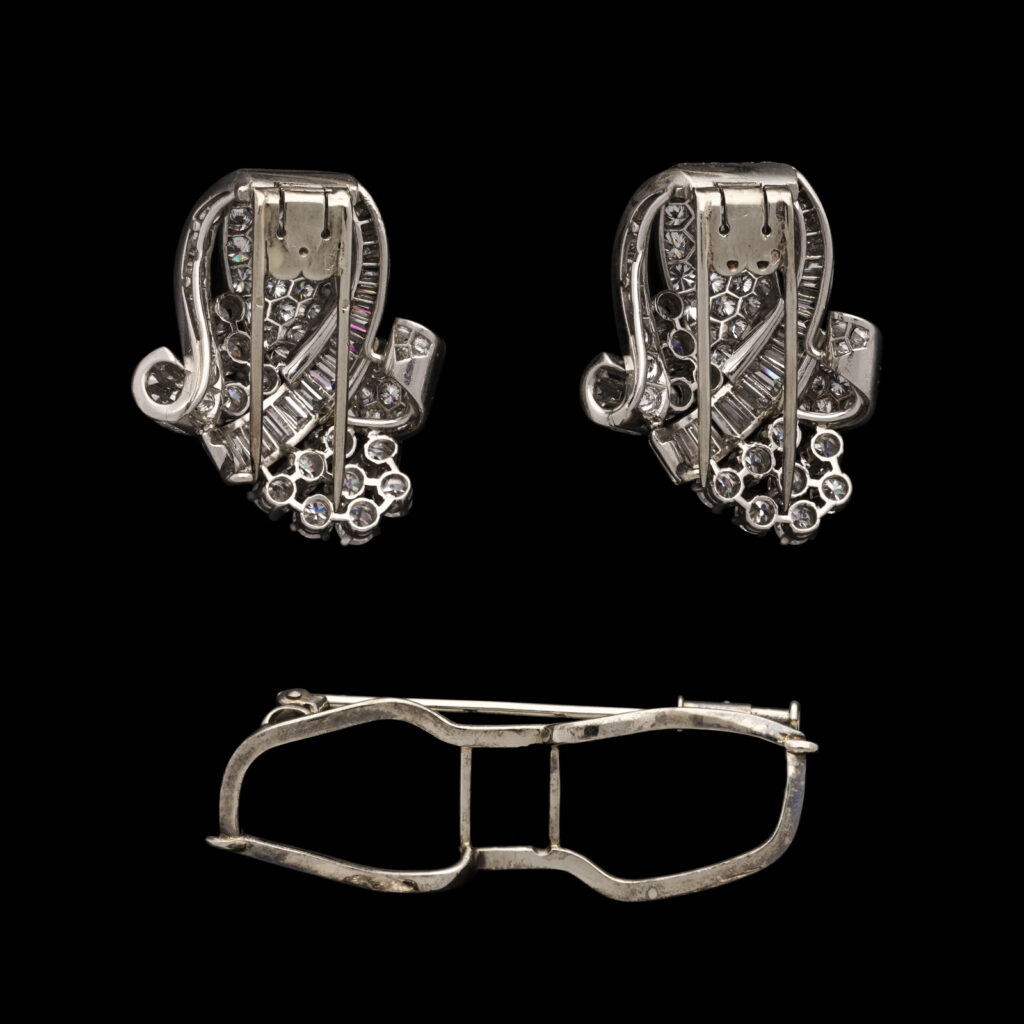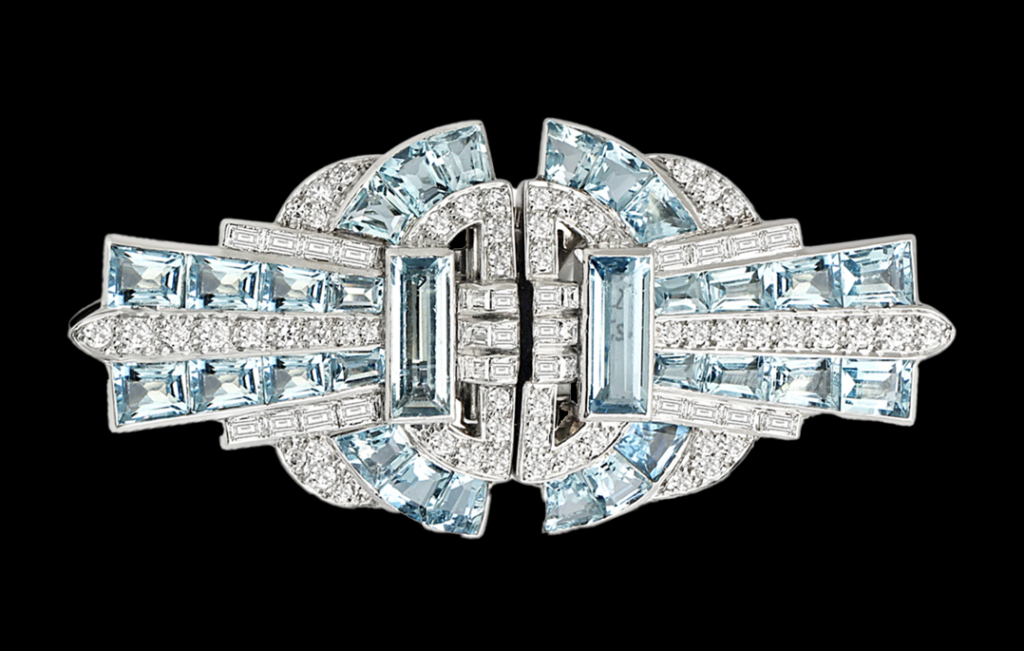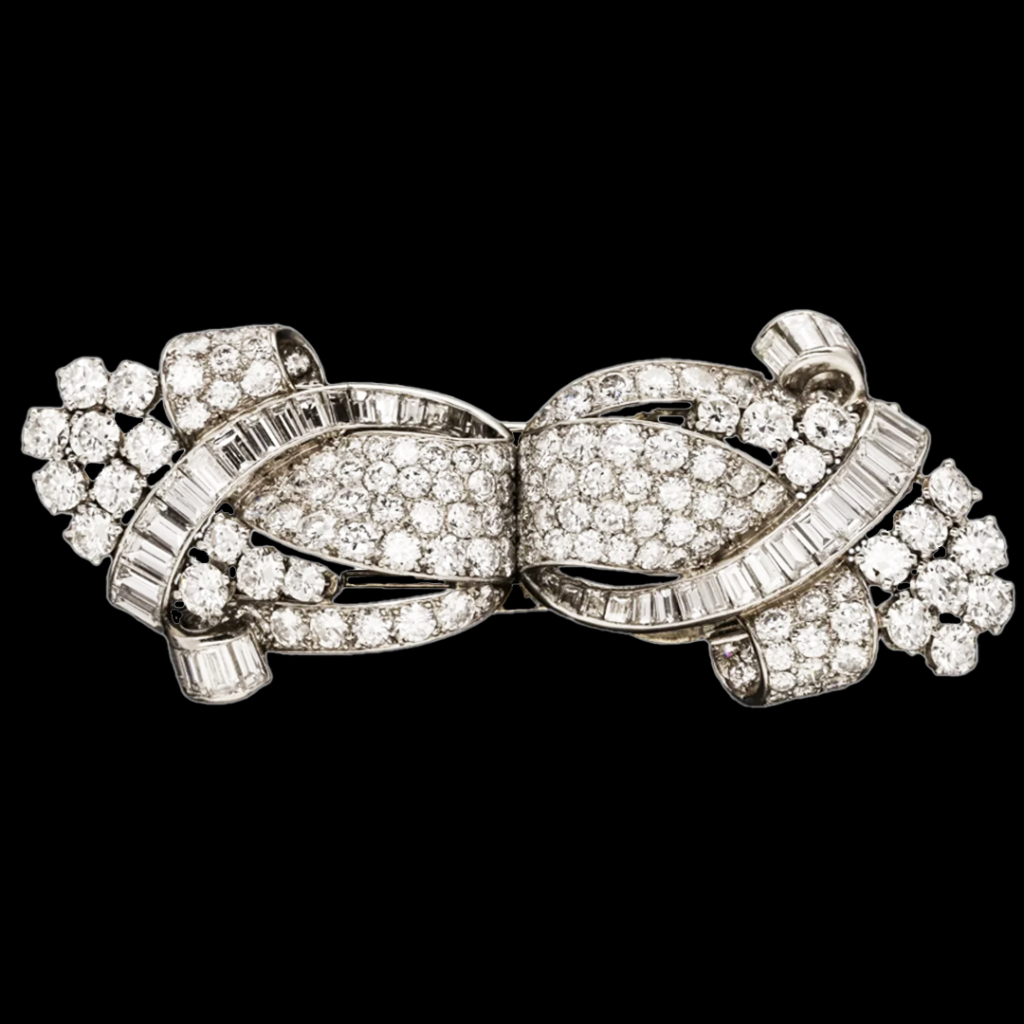One of the most fun parts of watching movies from the early days of Hollywood is seeing the clothing and jewelry that the sirens of the silver screen were wearing. They were always impeccably dressed and often dripping in eye-popping jewelry. One of the most interesting jewelry items seen in those days were opulent dress clips — a pair of matching pins that were generally fastened to each side of the neckline of a dress. While you may find a single dress clip, they were most often found as pairs.
Paul Poiret, Petticoats and Corsets
Fabulously glamourous, dress clips arrived on the jewelry scene in the 1920s and stayed on trend through the 1930s and into the 1940s. To fully understand the use of dress clips, we need to look at fashion in the early years of the 1900s and how it evolved in the first twenty years of the century. In the early 1900s dress codes were very formal and rigid. Corsets were worn with floor length dresses made from sumptuous fabrics and detailed with lace and other embellishments. Then World War I (1914-1918) upended the elegant lifestyle and as men left for war, women were left to take care of the jobs that were generally held by men. This of course changed how women dressed, they needed to be able to move freely and easily. Women ditched their corsets and their clothes became looser, hemlines rose and hair was chopped into a bob. They even wore pants during the day. By the time the war ended women’s fashion was forever changed. Parisian couturier Paul Poiret, who was at his peak in the pre-World War I years, was instrumental in this changing style. Years earlier he had ditched the petticoats and corsets that created an “S” shaped silhouette for women in favor of looser silhouettes and dropped waistlines along with lots of color. Ironically, when the war was over, Poiret and his designs fell out of favor, but the freedom from corsets and petticoats that he promoted lasted.
Two Dress Clips Become One Brooch

Clothing in the 1920s was simpler with more relaxed shapes than previous eras including the flapper dress which was a tubular sheath with a dropped waistline and shorter length. It was also during the 1920s that Coco Chanel was instrumental in furthering a new look. Her contemporary way of wearing skirts and matching jackets was a modern approach to a changing world. These simpler styles needed embellishment and that meant jewelry. Chanel favored ropes of pearls and stacks of bangles or large cuffs. Somewhere around the early 1920s dress clips began to show up. Although it is unclear as to who developed the original dress clips, they were almost always in pairs and were a must-have accessory for any well-dressed woman. The always innovative Louis Cartier is credited with developing and patenting the mechanism that allowed two dress clips to be combined as a brooch in 1927. This new backing added versatility to these jewels that adorned every Hollywood starlet creating desire for this glamorous accessory that could now be worn as one clip, two clips or as one brooch.
Dress Clips Are Versatile

Dress clips, which are distinguished by the triangular shaped clasp on the back that had a spring mechanism, allowing it to fasten to the edge of a garment, were worn in a number of ways besides on the neckline of a dress. They were also used to embellish handbags and hats. Until shoe clips were invented dress clips were also sometimes attached to shoes. Most of the dress clips made during the 1920s and 1930s used either platinum or white gold and diamonds, but by the 1940s dress clips were being made in yellow gold with colored gemstones. Dress clips took on another role during the 1940s war years. Pretty much everything was hard to come by and rationing was rampant so buying news clothes wasn’t always easy. Dress clips took on the job of elevating day wear to evening wear. The outfit worn during the day was lifted to a night time look by the addition of dress clips, which made the clothing party ready, doing away with the need to purchase a new dress. During the war years anything that could do double duty was appreciated.
As the 1940s drew to a close, dress clips fell out of fashion favor as the more classic brooch became the chicest of jewelry accessories. However, the unique versatility of dress clips makes them a welcome addition to any modern jewelry wardrobe.
Featured image (top of page): Art Deco diamond and platinum double clips convert to a brooch, courtesy Hancocks of London (@hancocks_london).
Authored by Amber Michelle


